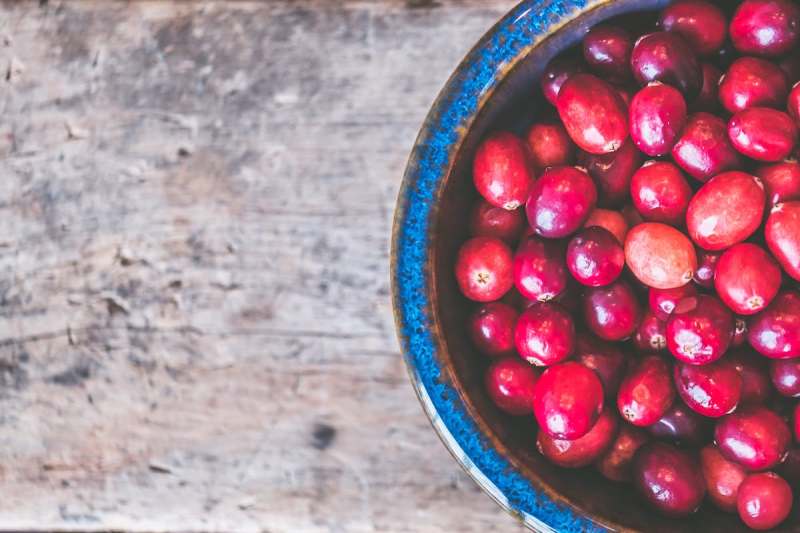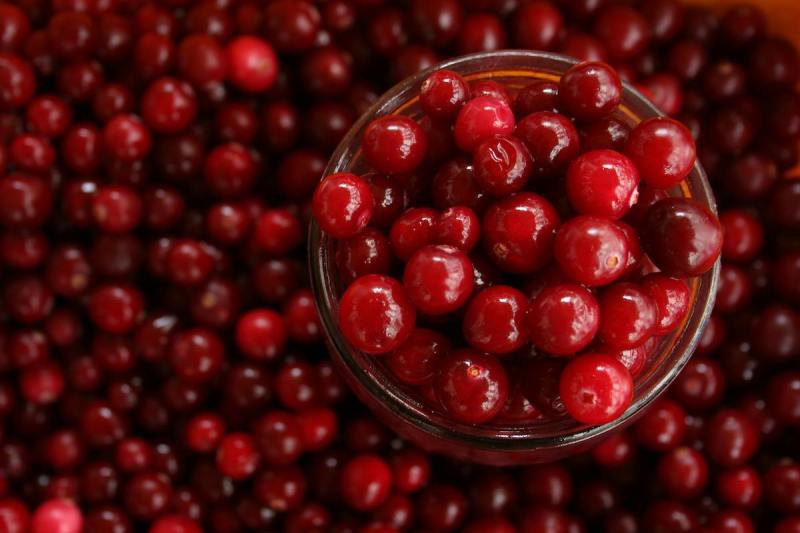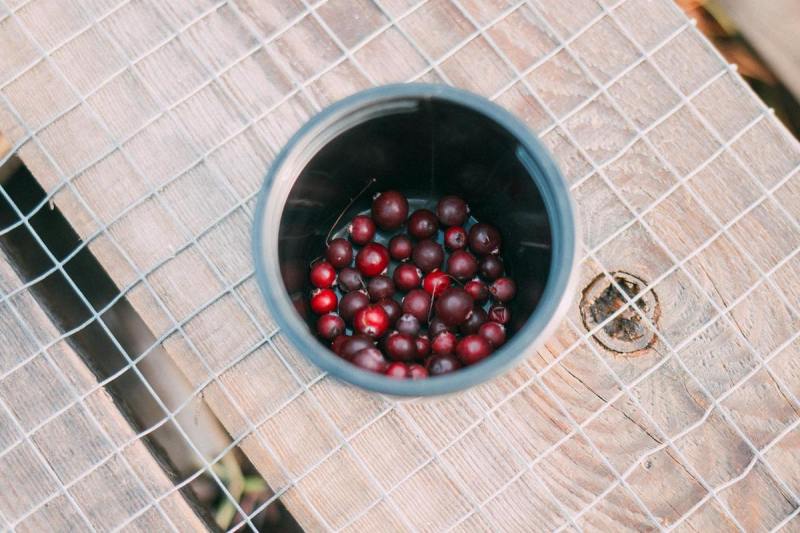
In the winter, cranberries serve as festive decor on wreaths. However, the best way to enjoy cranberries is as a food. There are so many ways to do so beyond a classic can of cranberry sauce on Thanksgiving (or homemade, if you’re feeling fancy).
“Cranberries deserve more love outside of your turkey dinner,” said Amanda Sauceda, RD, a registered dietician and the founder of The Mindful Gut, LLC. “They are versatile to use and complement many favorite fall foods. Their beautiful red hue gives your food a nice pop of color, making dishes visually appealing.”
Aesthetic aside, are cranberries good for you? Just like pumpkin, cranberries are festive, decorative, delicious, and — best of all — healthy. Registered dieticians share the many benefits of cranberries and how to incorporate this fruit into your winter meal plans.

Cranberries at a glance
Cranberries offer numerous health benefits, from gut-friendly fiber to healing properties. The versatile fruit has multiple uses in dishes with a four-season flare. However, there’s something cranberries are not: A berry.
“Cranberries are tart red fruits, but despite their name, they’re not berries,” said Maddie Pasquariello, MS, RDN.
“Cranberries are considered false berries or epigynous, as blueberries are.”
What’s not false? Cranberries are a staple ingredient in cold-weather and holiday dishes. Part of the reason? Fresh cranberries are easiest to obtain as the chill sets in.
“They grow on vines, typically near a body of water, and are usually harvested in the fall,” Pasquariello said. “Cranberries are one of just a few fruits native to North America and have long been included in holiday and winter menus due to their seasonality. They are rarely eaten raw due to their tart, sharp taste and dense flesh. Instead, cranberries are typically roasted, cooked on the stove, or stewed into a compote-like texture, often with the addition of citrus, spices, and sugar.”
The health benefits of cranberries
Cranberries have long been considered a food with immense health benefits.
“The history of cranberry consumption dates back to Native American tribes like the Inuktitut, who are thought to have used the fruit for medicinal purposes,” Pasquariello said.
Modern research and experts also agree that cranberries are good for you.
- Urinary tract infection (UTI). UTIs aren’t for the faint of heart, but one expert shares that cranberries seem to have properties that prevent bacteria from sticking to the bladder’s walls. “The good news is that cranberries may be just what the doctor ordered to help prevent UTI,” said Dr. Joan Salge Blake, EdD, RDN, LDN, FAND, a nutrition professor at Boston University, author of Nutrition & You, and the host of the nutrition and health podcast, Spot On! “According to the NIH, cranberries and cranberry products, such as cranberry juice, can reduce the risk of UTI by about one-third for those susceptible to this unpleasant condition.”
- Flu. UTIs aren’t the only infection cranberries can affect. “Cranberry extract has been shown to have some effects against the flu,” Sauceda said. “The red color in cranberries is also a sign of the health benefits. Cranberries are a source of polyphenols that have been found to have antioxidant and antimicrobial properties.”
- Chronic disease. In addition to infections, cranberry benefits may include protection against chronic diseases. “Cranberry products, including extract and pure juice, are thought to play a role in lowering total cholesterol and potentially preventing chronic diseases, like cancer and metabolic syndrome,” Pasquariello said.
- Gut health. Your taste buds aren’t the only ones thanking you for digging into cranberries. “Cranberries are also a fiber food, which makes it good for your gut,” Sauceda said. “A cup of chopped cranberries has 5 grams of fiber.”
However, some people should speak to a doctor before consuming cranberries.
“Generally speaking, cranberry juice and extracts consumption should be limited if you suffer from kidney stones or are taking certain medications, as interactions can occur,” Pasquariello warned. “Always talk to your medical provider if you are on medications like blood thinners to ensure you consume an optimal diet.”

How to enjoy cranberries – besides just cranberry sauce
The homemade vs. canned cranberry sauce debate is one of Thanksgiving’s best food fights. However, don’t simply limit this cool-weather fruit to sauce. Experts shared that cranberries made fantastic add-ons to numerous dishes and spilled a few favorites.
- Dried cranberries in salads with goat cheese and walnuts. Pasquariello loves livening up a salad with dried cranberries. “Dried fruit … adds a bit of sweetness, tartness, and soft texture,” she explained. “Adding a protein and grain — I love farro here — can make this a more macronutrient-balanced meal.”
- Cranberry smoothie. A better breakfast begins with a blender (and some cranberries). “Blend cranberries with a ripe banana and some almond milk for a nutritious and delicious smoothie,” said Kelsey Costa, MS, RDN, a registered dietitian nutritionist and nutrition consultant for Consumer Health Digest. “This smoothie is rich in essential nutrients and has a slightly tart yet sweet taste, perfect for a refreshing start to the day.”
- Muffins. Pasquariello loves baking cranberries in the days following Thanksgiving. “I find that muffins are a great way to repurpose leftover cranberries from your holiday spread — not too sweet and with just the right amount of tartness,” she stated. “You can also add other ‘berries’ to mix and match.”
- Cranberry trail mix. Whether you’re hitting the trails or need a good travel snack, this Costa-suggested option will fuel your trip. “Unsweetened dried cranberries can be a tasty addition to your favorite trail mix,” Costa said. “Combine them with nuts, seeds, and dark chocolate chips for a nutrient-packed snack perfect for on-the-go or as a pre-or post-workout boost.”
- Energy bites. Sauceda suggested this easy cranberry-packed recipe to beat the afternoon slump. “Mix oats, chia seeds, nut butter, honey, and chocolate chips. This is a no-bake recipe where the cranberries add a sweet and tart flavor,” she said.
Is cranberry juice good for you?
Typically, juices get a lousy reputation for sugar content. The answer regarding cranberry juice requires nuance.
“Cranberry juice beverages can provide the healthy benefits of phytochemicals to the diet,” Blake explained. “The only downside is the added sugars. A cup of sweetened cranberry juice will provide about 30 grams of added sugar, equivalent to just over 7 teaspoons of added sugar.”
Avoid this drawback by opting for an unsweetened cranberry juice.



